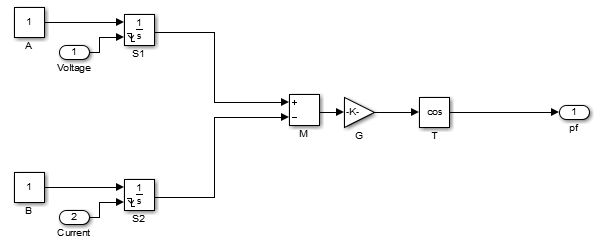

Harmonics are making their presence felt in electrical distribution networks due to both the use of nonlinear devices in the consumers’ area and the high development of distributed generation. In conclusion, the chapter proves that the network harmonic impedance is a useful tool to estimate the harmonics amplification caused by power factor correction using shunt capacitor banks. The results obtained by calculus are then compared with the values obtained by simulation after the connection of the capacitor bank to the network. Using the values of the harmonic impedance and the capacitive reactance of the capacitor bank that is connected for power factor correction, the amplification of the harmonic voltages and currents is estimated by calculus.


A distribution network containing harmonics is modeled using MatLab Simulink, and harmonic impedance is determined by simulation in different operating conditions. Amplification factors are calculated depending on the equivalent harmonic impedance of the network seen in the compensation bus. Based on its values, a quick method is developed to anticipate the harmonic voltages and current amplifications that can occur when a shunt capacitor is installed for power factor correction. This chapter proposes a method for practical determination of harmonic impedance. Power factor correction by shunt capacitor switching in electrical networks containing harmonics can lead to harmonics amplifications by harmonic voltage increasing and capacitors thermal overstressing by great values of the currents flowing through them. Harmonic impedance monitoring and using it in expert systems for operating condition optimization will increase in the future. The unfavorable operating conditions are anticipated based on the network harmonic impedance values, and the means of intervention are selected. This chapter proves that the harmonic impedance is an efficient tool for assessing the state of distribution networks containing harmonics. The deployment model has a real-time interrupt service routines (ISR) configured to trigger PFC control at the rate of 50 kHz.The importance of the subject is given by the fact that harmonics are making their presence felt in electrical distribution networks, and the cheapest and most widespread solution for power factor correction is the capacitor banks.
#Power factor correction matlab simulink code
Observe the output waveforms on the Scope block Generate Code for the Controller and Load it on the controlCARD Open the PFCMultiAxisKitSim model, and click the Run button to simulate the model.Ģ. The controller operates at a rate of 50 kHz.ġ. The output of the PFC controller is the PWM duty cycle of the DC-DC boost converter. The reference for the current loop is generated by feed-forward of the rectified DC voltage as well as the output of outer the voltage loop.

The inner current loop performs the wave shaping of the input AC current to maintain a high power factor. The outer voltage loop ensures that the output DC voltage is maintained at the set reference by using a discrete proportional integral PI controller. The PFC controller provides current shaping of the AC input and regulates the DC bus. The duty cycle of the PWM output determines the amount of boost imparted to the input voltage. For simplicity, only one phase has been used for the boost operation. The DC-DC boost converter on the kit has a two-phase interleaved topology. The AC-DC rectification stage uses a traditional uncontrolled H-bridge rectifier.


 0 kommentar(er)
0 kommentar(er)
